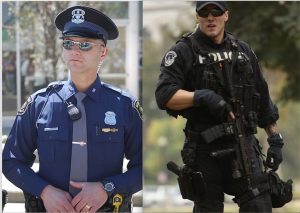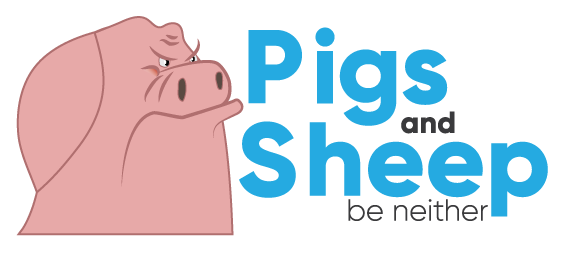Every so often, I read a story of a police raid gone wrong. Sometimes, it’s a ‘wrong house’ situation, sometimes it’s an unfortunate outcome of someone ‘swatting‘ someone else, sometimes it’s overzealousness on the part of an investigator, a district attorney, a politically minded police department official, or an overly zealous raiding team. Most are related to the drug war, and many of these stories fit into the category of police “militarization” that author and commentator Radley Balko writes of. This was a hot-topic issue a couple years ago, when the Federal government offered up lots of surplus military equipment to local police departments, large and small, but it has faded into the background of late.
That’s unfortunate, because some of the same questions raised about the propensity for excess when a police department is equipped with tanks and other military gear apply to the strained relations between police and the public today. In particular, I refer to the increased propensity for our law enforcement officers to dress like soldiers.
Professionally, and with apologies to George Michael, the clothes do make the man. Businesspeople, attorneys, politicians, maitre d’s, concierges, and many others wear suits to work. Doctors wear lab coats. Pilots wear uniforms, as do hotel receptionists, casino dealers and croupiers, and foodservice workers. Mechanics wear logo’ed overalls. Delivery people and utility service workers wear the attire of their jobs In terms of practicality, all these people could easily and more comfortably perform their jobs in t-shirts and jeans, and yet they don’t.
Why? Because the image an individual presents to others impacts his or her interaction with the world. So it goes for law enforcement.
 Consider these two images, one of a police officer in traditional uniform, the other in military-style garb. Now, consider the attitude infused via the clothing selection. Whereas the police officer in uniform is likely to perceive his job as shepherding “his” community, the military-garbed officer is likely to perceive his job as going against “others,” i.e. people not of his community, i.e. “enemies.” One suggests and invites professionalism, the other suggests and invites fear and/or aggression, both from and to the police officer. This disparity in attitude is problematic, both in theory and in real-world tragedy (as a study showing increased police violence coinciding with increased militarization tells us). It may also be deliberate, which makes it even more worrisome.
Consider these two images, one of a police officer in traditional uniform, the other in military-style garb. Now, consider the attitude infused via the clothing selection. Whereas the police officer in uniform is likely to perceive his job as shepherding “his” community, the military-garbed officer is likely to perceive his job as going against “others,” i.e. people not of his community, i.e. “enemies.” One suggests and invites professionalism, the other suggests and invites fear and/or aggression, both from and to the police officer. This disparity in attitude is problematic, both in theory and in real-world tragedy (as a study showing increased police violence coinciding with increased militarization tells us). It may also be deliberate, which makes it even more worrisome.
Uniforms are strongly tied to work cultures. Uniforms are a point of pride, and they command respect from both their wearers and those who interact with their wearers. They affect mentalities and mind-sets, and when we accept those who are support to “protect and serve” wearing military-style attire instead of traditional police attire, we contribute to the increased friction between law enforcement and communities. Yes, there are times when BDUs are appropriate, and there are times when the message sent by such attire may be called for, but we should expect those to be the minimized exception, not “every chance we get,” which seems the prevalent attitude. The wrong attire may go beyond the mindset of the wearers into the realm of unnecessary escalations (think, urban unrest that turns into a riot), with tragic consequence.
People continue to fret about the discord between cops and communities, but too few address one easy step in the right direction: Dress cops like cops, not like soldiers. Lovers of liberty, especially, should see the wisdom in this.

I get enraged when I hear about one of these police raids gone wrong. Your suggestion about the uniform is spot on. A great idea. But, I have a funny feeling about all this militarization of the police. Together with increased violence, asset seizure, encroachment on individual rights. It looks deliberate, and yes, it is worrisome.
I’d apply Hanlon’s Razor, “Never attribute to malice that which is adequately explained by stupidity.” That, a loss of understanding of the nature of “community,” and the CYA motives driven by our society’s extreme litigiousness. The last point speaks to the concern of accountability should a non-SWAT action go wrong when SWAT was available. It’s the same mindset that drives doctors to over-do tests, companies to print a million “water is wet” warnings on their products, etc.